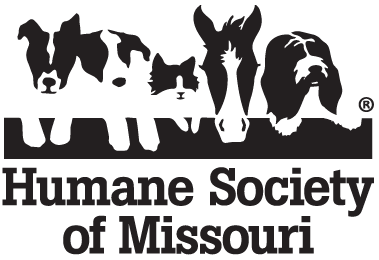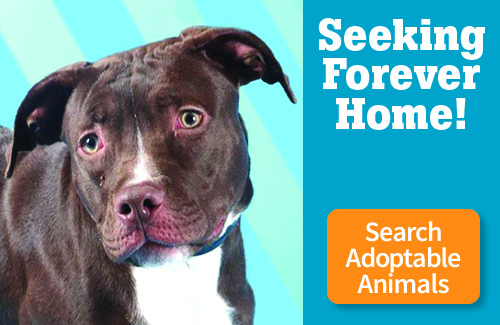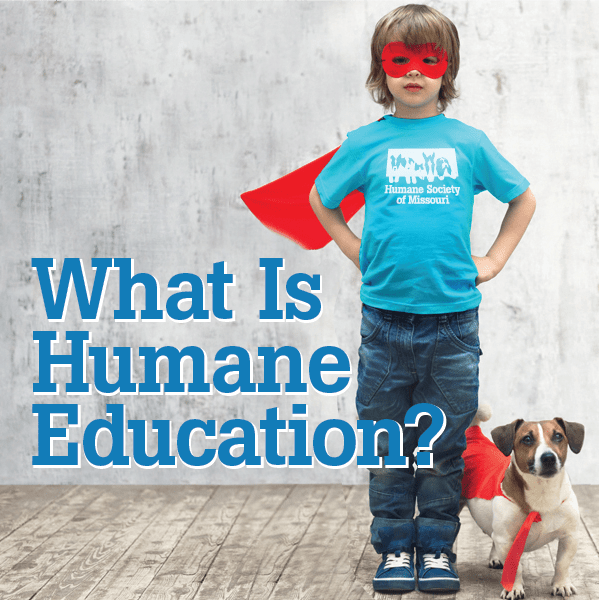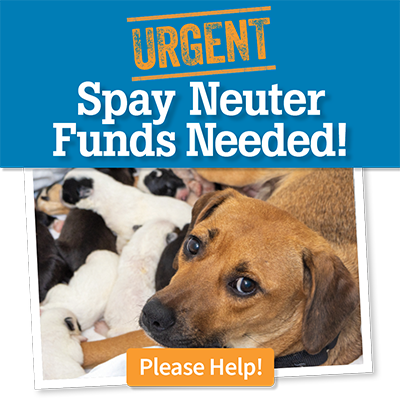Despite the best of efforts of owners, many dogs will display behaviors that are undesirable to their human family. However, most of these problems can be prevented or treated with a better understanding of normal canine behavior and by improving the way we communicate with our dogs. Perhaps the most important elements in providing for the wellbeing of the dog, while preventing or improving undesirable behavior, are a predictable daily routine, predictable consequences and environmental enrichment.
What is predictability and why is it important?
A predictable daily routine provides the dog with consistency about when to expect social interactions, attention and elimination, and when to expect inattention and objects for self-play. When the needs of the dog are not adequately met or the daily routine is unpredictable, the dog may become exceedingly anxious and distressed, as it lacks control over its environment. Similarly, when the consequences of a dog’s actions lead to inconsistent responses from the owners, the dog is unable to control outcomes and may become conflicted or anxious. From the owner’s perspective, this can lead to an increase in undesirable behaviors or attention-seeking behaviors. If the owner reinforces only those behaviors that are desirable and ignores those behaviors that are undesirable then the dog can soon gain control and understanding of which behaviors earn rewards. Similarly, if an outcome is consistently unpleasant, the dog may quickly learn to cease or avoid the behavior. When owners punish their pets, they are responding to the pet’s behavior with both attention and threats, and this can cause increasing fear, avoidance or conflict. Although the owner’s intentions to teach the pet what not to do by punishment, the pet is not being taught the desirable behavioral response. Some dogs may simply learn to cease the behavior in the owner’s presence but will continue it in the owner’s absence.
How do normal behaviors become problem behaviors?
Although there are age, breed, and individual differences, the normal daily routine of most dogs will include feeding (including hunting and scavenging), elimination (urine and stools), social play, environmental exploration (including chewing and object play), and sleep or periods of rest. Not only is there great diversity in size, shape and color between breeds, but there is also a wide variation in the function or working ability of different breeds (such as herding abilities in many collie breeds). By recognizing any breed-specific behaviors, by providing appropriate and sufficient outlets for each of these normal behaviors, and by reinforcing those behaviors that you find desirable, you can help to shape and direct the dog’s normal behaviors into those that are acceptable to the family and home.
“If a specific behavior is genetically driven and then in some way is reinforced, the inappropriate behavior may become even more frequent and intense.”
When dogs use indoor locations to eliminate, when they exhibit methods of play and exploration that are undesirable to family members, or when they use sleeping and resting areas that are inappropriate, then these normal behaviors become problems for the owner. If a specific behavior is genetically driven and then in some way is reinforced, the inappropriate behavior may become even more frequent and intense. In an attempt to get this behavior to cease, many owners then punish the dog, which, instead of teaching appropriate outlets and locations for the behavior, makes the dog more fearful and confused about when and how to continue this behavior.
By meeting the dog’s needs with sufficient enrichment, providing a predictable daily routine and predictably teaching the dog which behaviors achieve rewards, we can resolve most behavior problems and reduce or prevent many forms of fear, conflict and anxiety.
Is enrichment the same for dogs of all ages?
Just as there are differences between breeds and individuals, adjustments also need to be made for age. Puppies have less den instincts (i.e., keeping its den or sleeping area clean) than adolescent and mature dogs, need to eliminate more frequently, and may not yet have developed any surface preferences for elimination. Therefore, greater attention to where and when the puppy eliminates will be required. Young puppies also require more frequent feedings. Social play begins to emerge at 3 to 4 weeks of age and reaches a peak at about 10 weeks of age. Social play not only aids in physical development but also appears to be an important step in the development of adult behaviors. Therefore, young dogs need multiple sessions of social interactions with other dogs. This can be achieved if you have other dogs in your home, if you schedule play sessions with other dogs (for example, the healthy and properly vaccinated dogs of friends, neighbors and family members), and if you attend puppy classes (where new playmates can be found). At the same time, interactive play sessions with humans provides additional and alternative forms of social play and helps to ensure proper socialization with the human species.
How should I play with my puppy?
Puppy social play often includes various aspects of chase, play biting and mounting (especially in young males). Therefore, you should expect these types of social play from your young puppy and your goal, while providing outlets for this play, is to ensure that it is also appropriate for people.
“Shaping and encouraging desirable social play is also an exercise in training.”
When training your puppy, remember that the consequences of a behavior determine whether that behavior is likely to be increased or decreased in the future. This means that shaping and encouraging desirable social play is also an exercise in training. Schedule a number of regular play sessions with your puppy when it is awake and ready for social interactions. This can include walks and runs, short training sessions and interactive play. Allow play to continue if proper behaviors are exhibited, but if the puppy shows any undesirable behavior, play should cease immediately. In other words, you should encourage chasing, biting, retrieving and chewing of toys, but any biting or grabbing of human clothing or body parts should lead to an immediate cessation in play (see our handout on play biting). Small treats or pieces of food can be used during play to reinforce desirable behavior, or to achieve breaks in the play where the puppy sits or settles before play resumes. Each time you throw a toy or play a game of tug of war, you can work with your puppy by training sit or down and teaching it to focus on you, and then reinforce the correct behavior with a treat and another session of play. Problem puppies may be better controlled with a leash and body harness or leash and head halter during play.
After play sessions are finished, giving the puppy an opportunity to continue to engage in object play, chewing or working for food can help to further satisfy its needs until it settles or rests.
How should I play with my adult dog?
As your puppy matures and becomes better trained, social play may include longer walks and runs, play sessions with other dogs, swimming, or interactive play that may include tug and chase games. You should also include an increasing amount of directed play such as retrieving, training sessions, agility or flyball. Consider the working function of the breed when deciding on the most appropriate games, play and training activities.
How do I meet my dog’s needs when I am not available?
Since exploration, scavenging and play with owner’s possessions are considered undesirable, you should provide your dog with objects for play and chewing that are desirable to both you and the dog. For most dogs, the ideal toys to stimulate object play and exploration are those that can be filled or stuffed with food, and which require active manipulation or chewing in order for the dog to get at the contents. Some toys and training foods also function as dental care aids by being hard and compressed or having a texture that stimulates chewing.
You can prolong your dog’s interest and focus on the object by freezing it or by stuffing it in a way that makes it difficult to get at the treats but keeps your dog motivated to try. You can also increase their desirability by only giving them to your dog when you are not available, by rotating through the toys to keep them novel, by placing special treats in or on the toys, and by placing food in the toys INSTEAD of in the food bowl. In fact, pets that are not yet ready to relax and sleep, or are in need of further play when you are otherwise occupied or out of the home, may benefit from having most or all of their food placed in the toys rather than in food bowls. This technique, sometimes referred to as food for work, challenges the pet to find a way to access the food, thus providing mental stimulation, physical activity, and a longer opportunity to play and chew. In some ways, working to acquire its food may also serve as a substitute for the time that might be spent in food acquisition and hunting in the wild.
How do I teach my dog to accept periods of inattention?
The final aspect of the predictable daily routine is to teach the dog to accept and expect periods of inattention, preferably in its own resting or bedding area. These resting times, which are a normal part of any dog’s day, should be scheduled at night and at other times when the owners are not normally available for social play. They are most likely to be effective if they follow sessions of social play, training, and after exercise and elimination. If the dog is not yet ready and willing to settle or nap in its bed, mat, room or crate, offer your dog the toys you have reserved for object play sessions. If the dog is not physically restrained by a door, crate, or gate, you should still encourage the dog to spend time away from you on its mat or bed. To do this, give your dog its favored chew toys only in these areas, and do not otherwise give the dog any attention until the next interactive period is due. Some dogs may need their periods of inattention and relaxation gradually shaped into longer sessions. If your dog is unable to tolerate lengthy absences without play, feeding, or inappropriate elimination, you both may benefit by using the services of a midday dog walker.
Spending part of each day attending to your dog’s needs with social enrichment, play, exercise and training will help your dog adapt to your home and become a more relaxed and settled pet.
This client information sheet is based on material written by: Debra Horwitz, DVM, DACVB & Gary Landsberg, DVM, DACVB, DECAWBM © Copyright 2014 LifeLearn Inc. Used and/or modified with permission under license.





